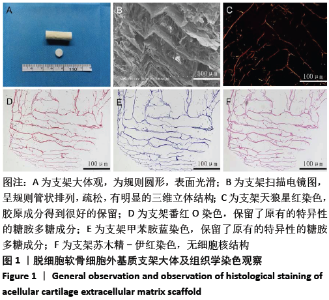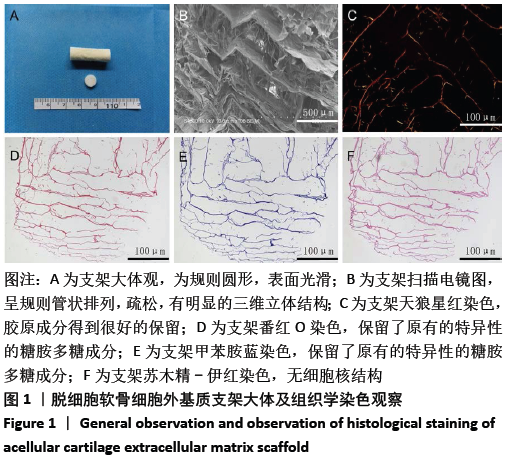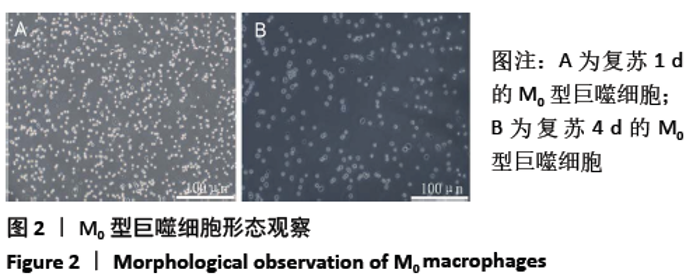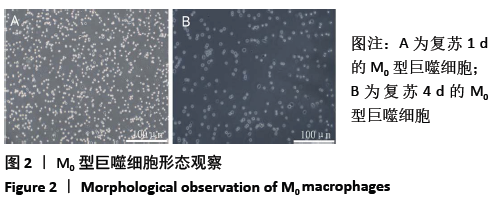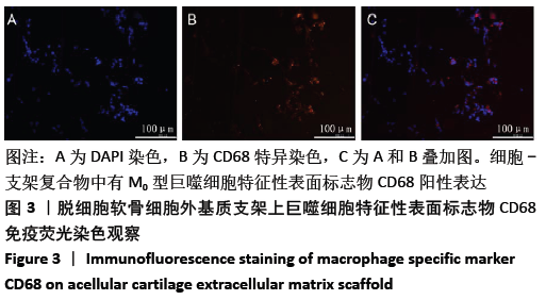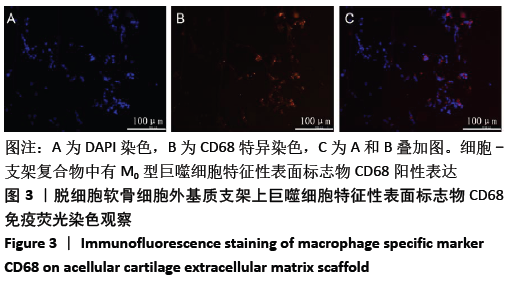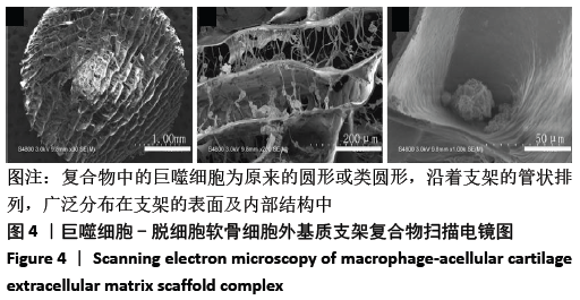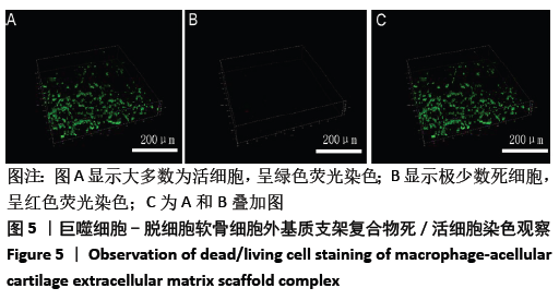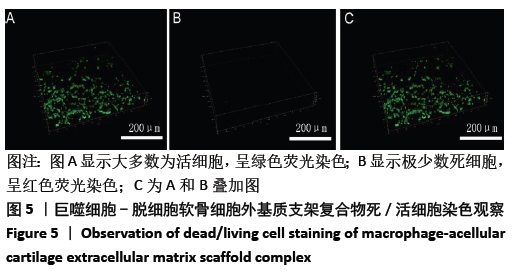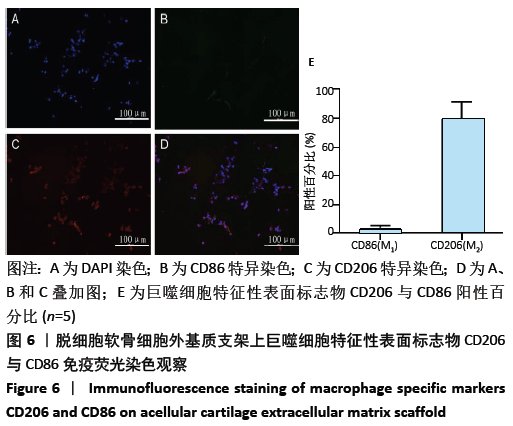[1] JOHNSTONE B, ALINI M, CUCCHIARINI M, et al. Tissue engineering for articular cartilage repair--the state of the art. Eur Cell Mater.2013;25:248-267.
[2] 张彬,沈师,鲜海,等.3D打印制备PLGA/脱细胞软骨细胞外基质支架材料及其理化特性研究[J].中国修复重建外科杂志,2019,33(8):1011-1018.
[3] THERET M, MOUNIER R, ROSSI F. The origins and non-canonical functions of macrophages in development and regeneration. Development.2019;146(9): dev156000.
[4] BROWN BN, RATNER BD, GOODMAN SB, et al. Macrophage polarization: an opportunity for improved outcomes in biomaterials and regenerative medicine.Biomaterials.2012;33(15):3792-3802.
[5] JULIER Z, PARK AJ, BRIQUEZ PS, et al. Promoting tissue regeneration by modulating the immune system.Acta Biomater.2017;53:13-28.
[6] 朱方强,陈民佳,朱明,等.炎症与组织再生修复[J].中华损伤与修复杂志(电子版),2017,12(1):72-76.
[7] BROWN BN, HASCHAK MJ, LOPRESTI ST, et al. Effects of age-related shifts in cellular function and local microenvironment upon the innate immune response to implants.Semin Immunol.2017;29:24-32.
[8] DZIKI JL, WANG DS, PINEDA C, et al. Solubilized extracellular matrix bioscaffolds derived from diverse source tissues differentially influence macrophage phenotype. J Biomed Mater Res A.2017;105(1):138-147.
[9] MATSUI H, SOPKO NA, HANNAN JL, et al. M1 Macrophages Are Predominantly Recruited to the Major Pelvic Ganglion of the Rat Following Cavernous Nerve Injury. J Sex Med.2017;14(2):187-195.
[10] 周静. 激活素A诱导树突样细胞分化及巨噬细胞成熟的作用研究[D].长春:吉林大学,2009
[11] TIAN L, LI W, YANG L, et al. Cannabinoid Receptor 1 Participates in Liver Inflammation by Promoting M1 Macrophage Polarization via RhoA/NF-κB p65 and ERK1/2 Pathways, Respectively, in Mouse Liver Fibrogenesis.Front Immunol.2017;8:1214.
[12] WANG LX, ZHANG SX, WU HJ, et al. M2b macrophage polarization and its roles in diseases. J Leukoc Biol.2019;106(2):345-358.
[13] LI J, LIU Y, XU H, et al. Nanoparticle-Delivered IRF5 siRNA Facilitates M1 to M2 Transition, Reduces Demyelination and Neurofilament Loss, and Promotes Functional Recovery After Spinal Cord Injury in Mice.Inflammation.2016;39(5): 1704-1717.
[14] 徐志鹏,左国平,靳建亮.巨噬细胞异质性及其在炎症调控中的研究进展[J].细胞与分子免疫学杂志,2015,31(12):1711-1714.
[15] ZHANG Y, LIU S, GUO W, et al. Human umbilical cord Wharton’s jelly mesenchymal stem cells combined with an acellular cartilage extracellular matrix scaffold improve cartilage repair compared with microfracture in a caprine model.Osteoarthritis Cartilage.2018;26(7):954-965.
[16] Zheng X, Lu S, Zhang W, et al. Mesenchymal stem cells on a decellularized cartilage matrix for cartilage tissue engineering. Biotechnol Bioproc Eng.2011; 16(3):593-602.
[17] YANG Q, PENG J, GUO Q, et al. A cartilage ECM-derived 3-D porous acellular matrix scaffold for in vivo cartilage tissue engineering with PKH26-labeled chondrogenic bone marrow-derived mesenchymal stem cells.Biomaterials. 2008;29(15):2378-2387.
[18] 鹿亮,刘彬,尚希福,等.脱细胞软骨细胞外基质取向支架复合软骨细胞构建组织工程软骨的实验研究[J].中国修复重建外科杂志,2018,32(3):291-297.
[19] SCHLUNDT C, EL KHASSAWNA T, SERRA A, et al. Macrophages in bone fracture healing: Their essential role in endochondral ossification.Bone.2018;106:78-89.
[20] SICARI BM, DZIKI JL, SIU BF, et al. The promotion of a constructive macrophage phenotype by solubilized extracellular matrix.Biomaterials.2014;35(30): 8605-8612.
[21] MURRAY PJ, ALLEN JE, BISWAS SK, et al. Macrophage activation and polarization: nomenclature and experimental guidelines.Immunity.2014;41(1):14-20.
[22] GORDON S, MARTINEZ FO. Alternative activation of macrophages: mechanism and functions. Immunity.2010;32(5):593-604.
[23] 肖统光,张一民,郭维民,等.细胞外基质来源支架在软骨组织工程中的应用[J].中国组织工程研究,2016,20(38):5737-5744.
[24] RAYAHIN JE, BUHRMAN JS, ZHANG Y, et al. High and low molecular weight hyaluronic acid differentially influence macrophage activation.ACS Biomater Sci Eng.2015;1(7):481-493.
[25] COLLINS LE, TROEBERG L. Heparan sulfate as a regulator of inflammation and immunity.J Leukoc Biol.2019;105(1):81-92.
|
